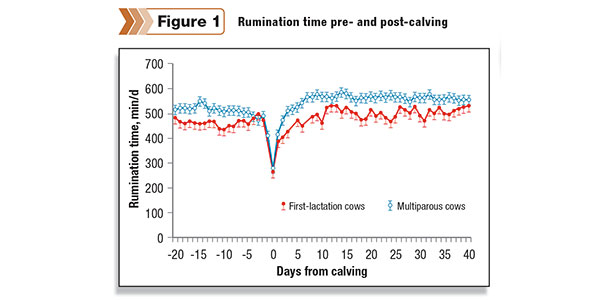Previously, we established that defining dairy cow health status is not always a black and white issue. That’s because while the vast majority of cows on dairies are healthy and a few are easily identified as sick, a certain percentage of cows don’t fit in either category. These are the cows that fall into the “gray area.” These animals do not stand out. They don’t show visual signs of illness or underperformance, but neither are they functioning at full capacity.
They’re just not themselves, even though you may not be able to see it. They are not reaching their genetic potential and ultimately costing a dairy operation productivity, resulting in lost income.
What to do?
First and foremost, the objective is to quickly identify these cows. Rumination data is directly correlated to the health of the cow and is considered a highly reliable metric to catch cows in the gray area.
In fact, many of these individuals identified by changes in their rumination patterns will have no visual or easily identifiable signs of underperformance. By tracking and monitoring rumination time, dairy owners and managers can rapidly spot deviations and pinpoint cows that require additional attention.
One way many users are optimizing performance is to use rumination data to find these gray-area animals before their next lactation begins. Transition cow health is key to overall herd health and reproductive performance, as researchers estimate that 30 to 50 percent of dairy cows are affected by some form of metabolic or infectious disease around the time of calving.
Furthermore, research published in the December 2012 Journal of Animal Science clearly demonstrated that cows with reduced rumination before calving maintained reduced rumination time after calving and suffered a greater frequency of disease than cows with greater rumination time in late pregnancy ( Figure 1 ).

Other research has also shown that metabolic events starting two weeks before calving have effects on reproductive health one to nine weeks after calving, which in turn affects reproductive performance weeks to months later.
By recognizing these animals with sub-par performance, dairy owners and managers can then take steps to optimize the possibility of a smooth transition and the probability of maximizing animal and herd performance. The actions taken because of the information gleaned from rumination monitoring may be one of any number of possibilities.
These actions may include the following:
• Performing additional diagnostic tests to determine if calcium, electrolytes or another intervention is needed
• Including probiotics or prebiotics to the diet of target cows or groups
• Checking to see if overcrowding is causing more cows to be “off”
• Working with your veterinarian and nutritionist to evaluate and tweak protocols and management strategies
Adjust protocols?
Sometimes the solution may be a relatively minor intervention targeting an individual cow or two. For example, an underperforming cow may receive a simple one-time treatment that will help her optimize her potential.
In other cases, depending on the length, severity or, potentially, repeated instance of a downward shift in rumination time, the intervention may be more aggressive in nature.
According to researchers at the University of Guelph, “proactive management and investigation of problems should focus on minimizing nutritional, housing, social and environmental factors that may impair feed and resting access for all or some members of the groups of cows.”
Regardless of the action taken, early management intervention with these borderline animals leads to a significantly higher recovery rate and better herd health. This translates into reduced culling, improved fertility, increased production and improved dairy profitability. PD
References omitted due to space but are available upon request. Click here to email an editor.

Shane St. Cyr
Field Support Manager
SCR Dairy Inc.








